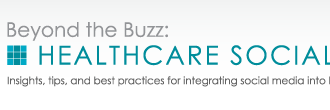Many hospitals are using social media as part of a broader marketing strategy with the goal of engaging patients. A recent study, however, suggests that hospitals that actively manage their online presence may not be attracting the audience they had hoped to reach.
Many hospitals are using social media as part of a broader marketing strategy with the goal of engaging patients. A recent study, however, suggests that hospitals that actively manage their online presence may not be attracting the audience they had hoped to reach.
The 2012 study, titled “Active Social Media Management: The Case of Health Care,” which was conducted by Amalia R. Miller of the University of Virginia and the RAND Corporation and Catherine Tucker of MIT, suggests that actively managed Facebook accounts tended to engage hospital employees more than patients because their content was not specifically focused on patients.
Boosting user-generated content
The study suggests that hospitals that actively manage their social media accounts, Facebook in particular, are successful in creating more user-generated content—one of the main goals of social media.
The study found, however, that this boost in user-generated content was being created by employees of the hospital, not patients.
Why? When hospitals posted more neutral content, such as achievements, general observations, or events, this content tended to engage employees rather than patients.The study suggests that users who already had strong ties to the organization were more likely to be interested in this type of content. When hospitals posted more patient-centric content, employee-related posts were lessened or eliminated.
Marketing—or something else?
Engaging employees is not necessarily a bad thing. Keeping employees happy and developing a sense of camaraderie is important to maintaining a positive work environment.
While this phenomenon may benefit the company as a whole, social media is usually considered a part of a hospital’s marketing budget. Additionally, this effect calls into question whether a hospital’s social media presence is serving its desired purpose.
By focusing content on patient-centric topics, marketers can re-focus their efforts to engage patients through social media.
Creating patient-centric content
Hospital marketers who want to engage patients should focus their content on clients’ needs and interests, and may want to consider starting a separate, private group for employees.
While it is tempting to post news that is organization-centric, this study finds that content of this nature is more likely to be of interest to users who already have a close tie with the organization—namely employees.
Patient-centric content may include:
- Health information
- Testimonials
- Photos of facilities
- Interviews
- Events for patients, such as screenings or wellness exams
This study found that hospitals that actively managed their social media account can greatly reduce employee-centric engagement by shifting their focus to information that matter to patients. Managing your social media accounts should be approached similarly to creating content that adds value to your website.
Ask your patients what issues are most important to them. Patient surveys are an invaluable tool to gauge what information your patients are seeking. Use their answers as a roadmap to create content that will keep patients engaged with your social media presence. Creating patient-centric content will help hospital marketers focus their efforts on engaging patients and meet their conversion goals.








